Blog
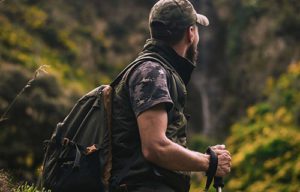
Conservation Corner – Leave no Trace
Welcome to the INWC Conservation Corner, where to cover topics related to fish, wildlife, conservation, habitat and outdoor recreation. This month’s issue was submitted by board member Ken McNaughton and highlights how to enjoy the outdoors while leaving no trace. We hope you enjoy this issue!
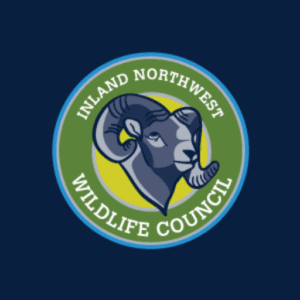
Scholarship Opportunity
INLAND NORTHWEST WILDLIFE COUNCIL SCHOLARSHIP PROGRAM BOB PANTHER EXCELLENCE AWARD The Bob Panther Excellence Scholarship Award worth $1,000.00 at an accredited institution in any state. It was Bob’s desire to see the INWC establish a scholarship program in lieu of receiving a personal award. This scholarship may be awarded annually and is available to INWC members and their children. Award recipients will be notified in writing by August 1st. Immediate family members of those serving on the scholarship committee are not eligible to apply. Additional requirements are available at the INWC office at 6116 N Market St., Spokane, WA 99208 Phone: 509-487-8552 Full scholarship application can be found HERE
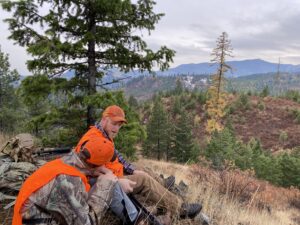
American’s Attitudes Toward Hunting
By Marie Neumiller Each month I have the opportunity to attend WDFW commission meetings and speak on behalf of the members of the Inland Northwest Wildlife Council as a part of our ongoing education and outreach efforts. There has been a growing trend at these meetings with several commissioners noting the hunting population percentage and how it relates to the overall population of the state. For example, it was mentioned over and over that only 5% of Washingtonians hunt, so therefore, it must be true that 95% of the state opposes spring bear permit seasons, which in turn made canceling the season acceptable. In a recent conversation with WWC/HHC president Mark Pidgeon, on this topic, he pointed out that this argument is secundum quid and does not match the actual attitudes towards hunting. Mr. Pidgeon went a step further, and shared an interesting study with me that directly backed up his statement. This intensive study was conducted by the National Shooting Sports Foundation (NSSF) and Responsive Management. Together, these two organizations have been tracking American’s opinions on hunting, fishing, sport shooting, and trapping since 1995 through phone surveys. The full survey results can be found HERE, the study link is also posted at the bottom of this article [1]. Their findings paint an interesting picture of the overall approval of hunting, and if we look carefully at the results, we can see areas where we as hunters can improve our messaging and outreach efforts. Is hunting a dying sport? Some commenters at WDFW commission meetings attempt to paint hunting as an outdated way of life and give the impression that modern humans are above such primitive, cruel actions. They try to make it appear that WDFW is caving to a small minority opinion (pro-hunting) while ignoring the majority (anti-hunting). However, the NSSF study directly refutes that argument. When asked about legal hunting, 80% of Americans approve, even if they do not participate in the sport themselves. The study specifically used language emphasizing legal activities so that, “poaching or other illegal activities would not be considered in the responses.” (pg 7). This is an important distinction to make in a survey of this nature, hunters and non-hunters alike will agree that poaching is reprehensible and has no place in the North American Model of Wildlife Conservation. While hunting received an overall all approval rating of 80%, tolerance varied in several ways depending on the motivation, species taken, and methods used. Motivation for hunting There is a strong fluctuation in the approval for hunting when taking the individual hunter’s motivation into consideration. Hunting for what are considered to be more traditional or subsistence purposes saw widespread approval (see study page 12); protection of humans 85%, for the meat 84%, locally sourced food 83%, and wildlife management 82%. When hunting is done for what is perceived as more “selfish” reasons then the approval ratings absolutely tanked; sport hunting 50%, personal challenge 41%, trophy 29%. What can we learn from these numbers? Well, the results of this study answer my personal curiosities as to why anti-hunting groups work so hard to paint hunters as “blood thirsty, egotistical, trophy hunters.” The general public actually approves of hunting for the reasons that most hunters currently participate in the sport. So by changing the underlining image of hunters these opposition groups can potentially change the public perception of the activity as a whole. Most of us who hunt are in it for a variety of reasons – quality meat for our families, making memories with loved ones, reconnecting with nature and our roots, the experience, sustainable meat, and so much more. Our adventures outdoors lead us to want to protect wildlife and their habitats in accordance with the North American Model of Wildlife Conservation. It’s almost impossible to participate in this sport and not gain a love for wildlife and wild spaces. On their Facebook page Blood Origins [2] recently shared a quote from Karen Seginak that perfectly sums up a hunter’s desire to protect nature, “I didn’t become a hunter because I was a conservationist, I became a conservationist because I became a hunter.” What a perfect way to sum up the hunter/conservationist. We should each strive to do better with the messaging surrounding hunting. If all that we share publicly are the grip and grin trophy photos at the end of the hunt, then it will be easy for anti-hunting groups to erode our image and turn an 80% approval rating into a net negative. So what can you do? Share photos and stories from the entire hunting experience. Scouting, hiking, camping, shed hunting, field notes, family stories, successes, failures, sunsets, meals made from your harvests…EVERYTHING! Methods and Species Hunted Here again the approval ratings had a wild swing depending on the perceptions surrounding the species pursued and hunting methods used in that effort. Below are a few of the highlights from study pages 23 and 34 respectively. Species hunted approval ratings Deer 78% Turkey 78% Duck 74% Black bear 44% Grizzly bear 40% Wolf 39% African Lion 14% Elephant 7% Hunting method approval rating Archery 80% Hound Dogs 55% Scent attractants 43% Bait 32% High tech equipment 26% High fence 21% Spring bear 20% As hunters, we can argue all day about which pursuit methods and which animals are more ethical, but doing so only helps anti-hunting efforts. So long as the hunting is being conducted in accordance with the local laws and follows scientific models (that ensure the population improvements or sustainability) then why denigrate each other and add to any negative perceptions? We are each on a unique journey, let’s celebrate the paths that we take instead of declaring our personal methods to be best thus naming ourselves the arbiters of ethics. Just because I archery hunt for deer to make it more challenging, does not make a rifle hunter unethical or less fair chase. Conversely, just because a rifle hunter encroaches less on an animal’s personal space does not make
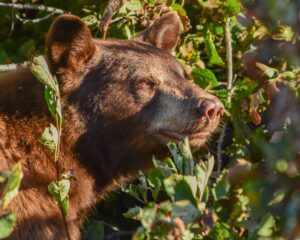
WDFW Commission Spring Bear Decision
WDFW Commission – Spring Bear Permit Season 2022 What Is It? Since 1999 Washington State has offered a spring black bear hunting season. This spring season is used as a fine-tuned conservation/management tool. Instead of offering an over-the-counter hunt, WDFW carefully sets permit numbers based on several factors: *Population estimates *Previous year harvests *Timber damage concerns *Prey level concerns *Human/bear conflicts The spring permit season is a very beneficial tool in WDFW’s overall game management plan that can help the department protect the wide variety of our state’s wildlife. What Happened? October 21, 2021, WDFW biologists gave a public presentation to the WDFW Commissioners reviewing the spring bear permit numbers and making a few changes to the post-harvest process. That presentation can be viewed HERE. Public comment received that day was overwhelmingly against the season, and bear hunting in general. Most hunters stated that they didn’t provide comment because they believed that the season was going to continue and only the overall permit numbers would be considered. November 19, 2021, the department was scheduled to make their decision on the proposal. After a long and heated discussion about the ethics of the hunt , and the validity of WDFW science, the commission took their vote. Four commissioners voted to adopt the 2022 season as proposed by WDFW staff, and four commissioners voted against the proposal. The commission requires a majority vote to pass, so the proposal failed. Normally when a rule change fails the department is forced to revert to the old rule that was in place. However, the spring bear season rule (WAC 220-415-080) is somewhat unique in that the title of the rule contains a year; “2021 spring bear special permits.” Meaning that the season expired and was placed on hold. As of this writing, there will be no spring bear hunting season in 2022. What’s Next? The most important thing that we can do at this time is to respectfully share our voice with the commission. You can email the commission, give public testimony at commission meetings, and help spread the word. Share your hunting/outdoor stories from start to finish so that people can understand everything that goes into the hunt, not just the grip and grins at the end. Share the family stories, the sunset photos, scouting adventures, meals made from your harvests, every angle of the adventure. In addition, the INWC board of trustees has been working closely with our partner organizations to create a rule change petition to hopefully prevent this from happening in the future. We have been encouraged by the outpouring of support on this petition and the efforts to restore the spring bear season. But we also want to caution everyone – this will be a long process and success may not occur until after the 2022 season. Rulemaking takes time and must be done properly, or the department runs the risk of having the changes overturned by lawsuits. Following the process properly now will potentially protect the season for the long haul. Please don’t lose hope; and stay connected throughout this long journey. As I like to say…The commission cannot support our voice if we fail to share it with them.
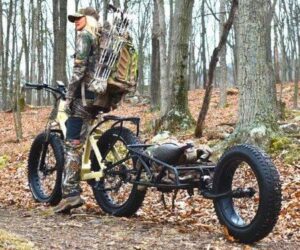
Electric Assist Mountain Bike
Electric Assist Mountain Bikes Innovation drives new technology into every avenue of our lives and often the policies guiding usage fall far behind the speed of innovation. This is the case with electric assist mountain bikes (eMTBs). eMTBs have been around since the 90’s, however, the Washington state legislature only recently passed ESSB 5452 – concerning eMTBs. This policy passed by the WA state legislature instructs DNR and WDFW to undergo a public process collecting information from various user groups related to electric-assist bicycle use on nonmotorized natural surface trails and closed roads open to bicycles. Aimed at determining which classes of bicycles will be allowed on which trails and roads under the management of those agencies. What is an eMTB? Funded by a military grant in 1997 Montague bikes teamed up with Currie Technologies and began development of early electric assist mountain bikes as a way to move military troops and equipment without the heat or noise signatures of a combustion engine. In the years following, innovation has exploded bringing improvements to battery and motor technology which has introduced a new generation of electric assist mountain bikes to the market [1]. Today eMTBs are sold around the globe for recreational use and as a means of transportation. eMTB Classes Generally, eMTBs are broken down into three separate classes (I, II, & III). All classes limit the motor’s power to 1hp (750W), the variations lie in the speed and operational function (pedal or throttle) of the bikes [2]. Class 1 – Pedal assist only, maximum motor assisted speed of 20 mph. Class 2 – Throttle assist, maximum motor assisted speed of 20mph. Class 3 – Pedal assist only, maximum motor assisted speed of 28 mph. Regulations Currently there are a patchwork of regulations for eMTBs depending on which agency is responsible for the management of the land. [3] DOI – authorizes the use of low-speed eMTBs (class I) on trails and paths where traditionl bicycles are allowed. Order 3376 directs FWS, NPS, BLS, and BOR to do a rule update to be consistent. USDA Forest Service – Considers eMTBs as a motorized vehicle DNR – Considers eMTBs as motorized, limited to roads and ORV trails. Washington State -SB6434 (passed in 2018) if local jurisdiction doesn’t address eMBTs, then rules default to classes I & II being allowed on roadways. Prohibited from use on non-motorized trails with natural surface (no added surfacing material). alternative). Washington State Parks – Allows the use of class I & III on trails where nonmotorized bikes are allowed. WDFW – Allows eMTBs where motorized vehicles are allowed. Does not allow eMTBs on designated non-motorized trails with natural surfaces (with limited exceptions – consistent with SB 6434). Your Opinion Matters ESSB 5452 has instructed WDFW to begin a public process to collect information related to the use of eMTBs on nonmotorized natural surface trails, closed roads open to bicycles. As well as determining which classes of eMTB are acceptable on those surfaces. We would love to hear your thoughts on eMTBs, please visit our poll HERE. [1] https://www.montaguebikes.com/folding-bikes-blog/2018/04/history-of-first-electric-mountain-bike/ [2] https://www.bosch-ebike.com/us/everything-about-the-ebike/stories/three-class-ebike-system [3] https://wdfw.wa.gov/sites/default/files/2021-01/e-bikes_on_wdfw-managed_lands_0.pdf (cover photo from WDFW presentation)
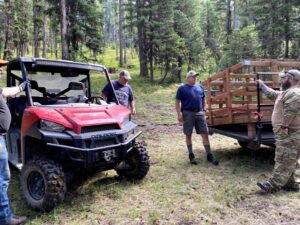
Volunteer Opportunity – Disabled Hunting Route Patrols
For the past several years the Disabled Access Committee (all of us) have spent a lot of time in the woods. Last year, despite COVID, we were still very busy inspecting existing wheelchair ramps/platforms, repairing some, and built two brand new ones, and installing those two on Aladdin Mtn, installing a refurbished platform on the upper side of Rustlers Gulch, and returning two from Betty Cr to the warehouse where they have each been refurbished and are now ready for deployment at Squirrel Meadows, and Blanchard Hump. Along with inspecting the existing platforms, several required a lot of work just to gain access to them. Along the way we found a lot of deadfall, which of course required removal. Some of this work required coordination with the USFS for access, and the last of it was not completed until after hunting season opened. In November, as I was debriefing the Colville NF District supervisor, whom I have coordinated with for the past several years, re: all our activity over the season, he tossed an idea past me that I brought to the INWC board for discussion and approval. Then Marie, Pete, and myself had a conference call with him, and the Newport District Ranger about specifics. Having approval from the board to move forward with this new endeavor, I am now sharing this project opportunity with you. Because we have earned their trust, we have entered a collaborative endeavor with the Colville National Forest to take care of the six routes within the forest that have been administratively closed – meaning they’re closed for disabled hunters access only – and not to include the road surface which we must always be mindful of, we have agreed to monitor the condition of those six gates, condition of the lock, or to report a missing lock, and then patrol those routes to ensure disabled sportsmen/women have adequate access to the entirety of each route to include all approves spurs of those routes. This means cutting away deadfall, reporting problem trees (widow makers), and any tree that is too big for us to handle – and report it to them for their sawyers to remove. Any route that has a wheelchair platform also means not only inspecting that platform, but it means saving time and travel by taking some spare material from the warehouse to repair a rogue handrail, or adding an extra screw here and there. Observe the condition of the platform and ramp deck surface. Could it use a coat of stain to help prolong life? Make a note of it and it will be taken care of on the second trip of the season. Yes, you heard that right. They have asked us to patrol the route in late Spring/early Summer as soon as snow melt allows, and then a final trip in late summer before hunting season opens, no later than October 1st. Since many families within the INWC gather together on weekends during the season with their ATV/UTV’s anyway, why not make part of the trip traveling trails you don’t normally have access to? This opportunity is not just for those on the Disabled Access Committee, it’s for all of us. If you’re interested in helping on any of these trips, there is a Forest Service form you need to add your name to at the office. If you have any questions, please contact me, Thanks in advance for all you do, Ken McNaughton
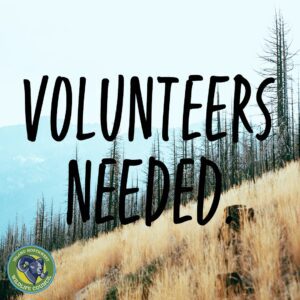
Volunteers Needed
Swanson Lakes wildfire recovery, volunteers will be helping to plant shrubs and plants to assist with the recovery in areas impacted by the wildfires. We will be meeting at 10 am each day, contact the office (509) 487-8552 for more information. Volunteers will need to pre register with WDFW as this is a joint project. Click HERE to register. Please bring a mask, hand sanitizer, gloves, water, and a lunch to the project site. Funding for this project came from the INWC’s wildfire recovery fundraiser. Together we raised over $16,000 for this effort. Thank you for your generous support!!
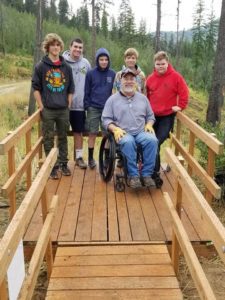
Disabled Hunting Access Program
March has arrived, which means that the application period for our disabled hunting access program on Inland Empire Paper Company (IEPC) lands has opened. Each year IEPC generously donates 25 access passes to the Inland Northwest Wildlife Council’s disabled access team for hunters with disabilities. The application is due on April 15, 2021 and can be downloaded by follow the link below. Drawing will be held on April 20, 2021 and winners will be notified shortly thereafter. Please return your completed application to the INWC office. 6116 N Market Street Spokane WA, 99208 office@inwc.org For more information on accessing Washington’s outdoors you can visit WDFW’s accessibility page, Also, our disabled access team leader, Ken McNaughton, shares information on the application process on the INWC YouTube page. Click Here to view that video.
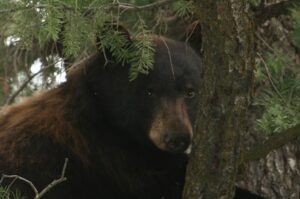
Spring Bear Hunting Seasons
Spring Bear Hunting Seasons By: Marie Neumiller, INWC Executive Director *Quick disclaimer – I started hunting birds with my dad as a child, and then as an adult I began hunting big game more frequently, but I have yet to go on a spring bear hunt. So when the spring bear permit decision blew up at the December WDFW commission meeting [1] I realized that I had a lot of learning to do. I would like to give special thanks to Commissioner Kim Thornburn and WDFW Game Division Manager Anis Aoude for taking time to; answer my questions, educate me in general bear management/conservation, and clear up my misunderstandings. Also, thank you to Clay Newcomb (Bear Hunting Magazine/Meat Eater), Bruce Tague (Sportsmen’s alliance), Jacob Hupp (Sportsmen’s alliance), and Jesse Ingles (Cattlemen’s association) for talking time to talk with me on this issue in depth. Your INWC representatives have spent the better part of the past month sifting through research and talking with reliable sources to be able to share a wide variety of information on the topic. Our hope is that the following article will present valuable information so that you can decide on the issue currently brewing in Washington State. Spring Bear Permits in Washington State The Spring bear season in Washington State is a part of the overall game management plan [2]. “The majority of bear hunting opportunity is in the fall, but a limited permit-only spring hunt is available. Spring hunts are designed to address emerging management needs, such as bear damage to trees in commercial timberlands, bear-human conflict, or to more evenly distribute harvest compared to fall seasons,” [2] (pg 101). Each year WDFW employees evaluate conservation goals for each area. They pair those goals with bear harvest data from past years and set new permit number suggestions for each of the bear units individually. These adjusted numbers are then presented to the Commission for approval prior to selling raffle entries. This permit hunt, as opposed to an over-the-counter hunt, allows the department to fine tune the take numbers and ensure population balance in each individual hunting area. Bear Behavior in Spring As temperatures begin to rise in the spring, bears awaken from their extended slumber. However, science has found that bears do not all emerge at the same time, and their overall hibernation period ranges from 131-171 days. As noted by the National Park Service [3], “Male bears emerge first, usually from early to mid-March (average days denned = 131 days), followed by solitary females and females with yearlings or two-year-olds (average days denned = 151 days) in late March through mid-April (Haroldson et al. 2002). Last to emerge are females with new-born cubs (average days denned = 171), from mid-April through early May. Males, sub adults, solitary females and females with yearlings or two-year-olds usually leave the vicinity of their den within a week of emergence while females with new-born cubs remain in the general vicinity of the den for several more weeks.” As for predation, bears tend to only be a threat to ungulate (deer, elk, and moose) youth in spring and early summer. Bears are omnivores that are on a constant search for foods that will provide the most calories while expending the least number of calories. In spring, black bears seek out sugar rich, quick growing grasses, which also tend to be ideal locations for ungulates to hide their fawns/calves. Being opportunistic by nature bears will take advantage of this situation which contributes to spring being the highest time of predation by bears. After about July these solitary hunters will generally stop preying on ungulate young as they begin to reach a more formidable size. They will instead seek out insects, plants, and carrion as their primary food sources (excepting for years of low plant yields or over grazing). Arguments Against Spring Season Let us start with the elephant in the room – orphaned cubs. Many groups that oppose spring bear hunting have a shared mantra, “one bullet kills an entire family.” Hollywood and hunting opposition groups will paint a picture of mama bear and her cubs all cozy in their beds in their quaint cave. Mama bear heads out of the cave to gather berries for her sweet babies not knowing that an evil hunter is lying prone a short distance away gun scope trained on the cave opening, intent on killing the sow and by proxy her cubs. Is this an emotional argument, or does the science support the claim that spring bear hunting is causing cubs to be orphaned in masse potentially putting bear populations at risk? The “Orphans from Spring Harvest” study [4] conducted out of Manitoba set out to answer that exact question. The study found that, “The 41 cubs that may have been orphaned each spring hunting season represented <2% of those that may die annually from natural causes,” (pg 30). They noted that, “comparing the estimates of orphaned cubs to those that die from natural causes (starvation, cannibalism, abandonment, predation, disease, human-related accidents) adds perspective to the situation,” (pg 30). After evaluating all the data collected over the study’s four-year period (1996-2000) these researchers concluded that, “The spring hunting season is a valuable wildlife management tool. It can be used to reduce or maintain black bear population at or below biological or cultural carrying capacity, thereby reducing, or maintaining problem bear incidents at tolerable levels in a cost-effective manner. The second argument commonly made is that weak and vulnerable sows will cache their cubs in trees while they seek food so hunters cannot properly identify sows with cubs. The results from the Manitoba study again directly contradict the argument. “The spring bear hunting season, when there are few other hunting opportunities, distributes hunting pressure over a greater period, gives hunters the advantage of short and sparse vegetation (which increases detectability of cubs with female bears).” [4] (pg 32). In fact, they found that spring bear seasons tend to, “…select against nursing females because
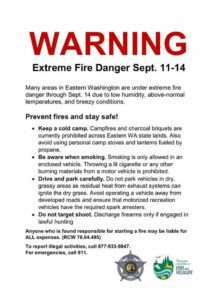
Fire Updates
Fire Updates The 2020 fire season started with a vengeance, with over 330,000 acres of land burning in a single day. Public lands commissioner Hilary Franz called it a, “historic fire event,” with “58 new wildfire starts and nine large fires on the landscape, compounded by hurricane-level winds.” Many of these fires are still burning throughout the state and the fire danger remains high especially in Eastern Washington. Closures As a result of the fires, our area has seen the following closures: *The Department of Natural Resources (DNR) has closed all of the public lands that they manage East of the Cascade Mountains through September 17th, though that closure could be extended if weather conditions do not improve. *DNR reopened their lands on September 18, 2020 visit dnr.wa.gov for current information. *Hancock Natural Resource Group, a partner with our disabled access program, has closed their lands to all recreation at this time (you can find updates Hancock here). This includes the Huckleberry and Blanchard hump disabled access areas. We will continue to update our disabled access program participants as we receive more information. *Access to Hancock property will reopen on October 6, 2020. *At the commission meeting on Friday, September 11th, it was announced that WDFW would be employing an education campaign instead of closing WDFW lands as hunting seasons are opening. Below is their informational sheet (more in-depth WDFW fire updates can be found here) Before you go outdoors *Check the conditions in the area that you will be visiting. The greater Spokane area is circled by fires at varying levels of containment, please make sure an area is safe before heading out. *Be aware of the air quality. As of Saturday, September 12th the air quality in Spokane was listed at hazardous and considered unsafe for for the entire population. *Pack smart for the back country – Officials are advising a cold camp so skip the Mountain Home and coffee over a propane stove and instead pack food/beverage options that do not need to be heated. Stay safe and recreate with caution during this time!
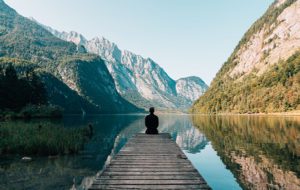
Responsible Recreation
One of the silver-linings of COVID-19 is that many people are discovering/re-discovering all the amazing outdoor recreational opportunities that our area has to offer. Hunting, fishing, hiking, biking, bird watching, mountaineering, horseback riding and so much more! Nothing quite matches the quiet offered by the outdoors. This temporary freedom from the hustle and bustle of everyday life relaxes and rejuvenates many who seek the outdoors as their refuge. In addition to the peace and quiet, the outdoor community has the small town feel reminiscent of a simpler time. However, to preserve the peace, tranquility, and beauty of these wild spaces we each must do our part: Pack it in – Pack it out Nothing ruins an outing quicker than stumbling across a pile of someone else’s trash while enjoying the outdoors. Not only does litter mar the beautiful landscape, but it can create hazards for the wildlife that call the area home. You might think that the one wrapper that you left behind will not have much of an effect, but it all adds up quickly. In fact, according to the Washington State Department of Ecology, “Every year in Washington, more than 12 million pounds of litter is tossed and blown onto highways and roads. Another 6 million pounds is tossed in parks and recreation areas.” (https://ecology.wa.gov/Waste-Toxics/Solid-waste-litter/Litter). Wild animals are naturally curious, constantly searching for food and have no understanding of the dangers presented by things like plastic wrappers or aluminum cans. Their excellent sense of smell usually helps wild animals find food and unfortunately attracts them to the food smells remaining on litter. Which sadly can lead to animals and fish being choked or strangled by the mess we left behind. Whenever you head outdoors bring along a container to hold all your garbage so that you can make sure everything you pack into the woods packs back out with you. Speak Softly Wild animals are naturally shy, their survival instincts encourage them to constantly be on alert and ready to flee from danger. One of the great joys of recreating outdoors is the opportunity to view these shy creatures in their natural habitat. If you are making too much noise while you are out exploring, you will not get the opportunity to see these animals and others nearby will lose their opportunities as well. Some animals, like the threatened Columbian sharp-tailed grouse, “are sensitive to human disturbance. Do not flush or otherwise disturb these birds.” (https://wdfw.wa.gov/places-to-go/wildlife-areas/swanson-lakes-wildlife-area-unit). If you recreate in a way that maintains the peaceful nature of outdoors you may receive the opportunity to view some of the rare and beautiful species out in the wild. There are, however, exceptions to this rule that need to be remembered. If you are exploring in predator rich areas, especially bear country, it is recommended that you make a bit of noise to avoid “surprising” those predators. Walking sticks with bear bells, periodically clapping your hands, or normal conversation are all methods that will let bears and other predators know that you are in the area and they will most likely attempt to avoid you. Most bear attacks occur when a bear is surprised by a human and feels the need to defend their young or their food. Leave it as you found it Pretty flowers, unique rocks or even driftwood can be very tempting to take home as souvenirs. Not only does it affect the habitat but in some areas, like national parks, it can be illegal to remove natural objects. Instead of loading up on treasures from the field consider taking a camera along on your outings and creating a photo journal to display all your finds. That way theses treasures remain for other outdoor enthusiasts to enjoy. Theodore Roosevelt said it best when he declared that, “wild flowers should be enjoyed unplucked where they grow.” Other important considerations to maintaining the beauty of these wild spaces is to tread lightly. Here’s a short list of ways you can minimize your impact when recreating outdoors: stick to maintained trails when available, avoid drilling or cutting into trees for things like hammocks, if you clear an area of stones/pinecones for a tent site be sure return them before you leave. Act Neighborly The outdoor community can be quite a tight knit and supportive group and it is up to each of us to maintain that sense of community. It can be as simple as waving to a passing car on a backroad, smiling at those you pass while out on your adventures, or stopping to help someone. Other ways to contribute to this community include mentoring someone interested in your sport or joining a local conservation group and/or sporting club like the INWC and becoming an active volunteer. If we all take a few simple steps each time that we head out into the wild spaces, we can ensure that these areas and the numerous gifts that they have to offer are preserved for generations to come. Not just for us and our children, but also for the wildlife that call these areas home.
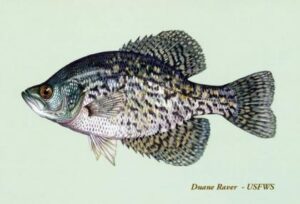
Fish Quiz
How many Washington State fish can you name? Test your fish skills in our quiz, share your results to compete against your friends.

Tracks Quiz
We may not always have a chance to see wildlife in the woods, but they often leave tracks behind. Are you able to identify the tracks that you pass while out on your adventures? Test your skills with our track quiz, bragging rights if you can identify the track without using the hints.
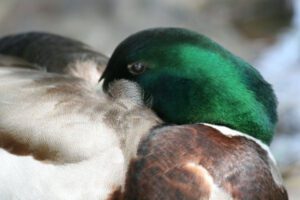
Wildlife Quiz
Are you an expert at identifying the wildlife of Washington State? Take our quiz to test your skill!
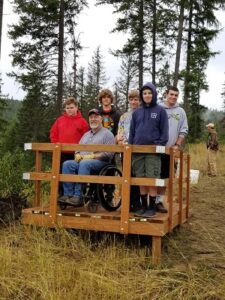
Providing Access and Opportunity for all Disabled Sportsmen
Ten years ago the INWC had a vision of providing better hunting opportunities for disabled hunters, specifically those in wheelchairs. A number of wheelchair platforms with ramps were built and soon deployed to several locations in the Colville National Forest (one on Brewer Mtn, and two on Betty Cr), One on Inland Empire Paper Company land (which somehow later was stolen!), while some were donated to the Boy Scouts, and one currently sits out on Vern Zieglers land and will soon return to the warehouse for maintenance and redeployment. Finally, two additional sat out behind the warehouse as spares awaiting a location to be used. Today we stand on the shoulders of the men and women who worked to make that vision a reality. Little did I know that when I signed on with this outfit at the BHS back in 2014, that I would someday become the chair of the Disabled Access Committee. In the late winter of 2016, Larry Carey passed the baton to me, along with some sage advice on the who, what, where, and when of this committee. So, here’s a short run down of what has happened since then … With the three platforms that were already up in the Colville National Forest, and had been there for seven years at that time, I began making an annual trip up to inspect them for any needed maintenance. Seeing as those three seemed to be faring well, our attention was now needed in making sure the Application process for the Inland Empire Paper Co disabled hunter program progressed as normal. Jean and Wanda were a huge help in getting this done. Somewhere along the way, having two spare platforms out behind the warehouse didn’t seem right to me. Surely, there must be a place we could put these where they could be used. I started asking questions at the WDFW office, and was given the contact info of Daro Palmer, Asst Mgr for the Sherman Creek Wildlife Area. After trading some emails, and visiting the Rustler’s Gulch Unit of the WLA, he agreed to let us put one out there. After Pete Butler and I scouted the area for the right location, we informed Mr. Palmer, and scheduled a work party. And in October of 2018, Pete, Matt Mimnaugh, myself, and one of Daro’s field tech’s installed the wheelchair platform on the low side of Rustlers Gulch Wildlife Area just off of the Holly Rd. We must have done a pretty good job, the following Spring we were invited to install one at the Sherman Creek Unit near Kettle Falls. It was preparing this platform that I realized the existing ramps were not ADA approved. We modified the ramps to meet the current spec, and with help from several members: and Daro Palmer, it was installed without a problem, and huckleberry shakes for everyone on the way home. Within the next two months, we had modified the ramp at Rustler’s Gulch and Brewer Mtn, to include moving the Brewer Mtn platform outside of a timber sale area to a new location on the same mountain. Then one year ago, after learning that a freshman at CVHS was looking for an Eagle Scout project, I reached out to him, shared the idea, then met with him and his father, who then agreed to move forward with the proposal. When the project got the go ahead, we used funds from our committee budget to purchase the materials. Member Jack O’Brien and I pre-cut all the materials on a Friday afternoon, and Saturday morning the Scouts showed up at the warehouse with two adult leaders, and after I shared some initial instructions and safety precautions, the boys got started, led by the Eagle Scout candidate. The boys exercised incredible initiative, asked for clarification when in doubt, and left this old man very impressed that they had completely assembled the entire platform, ramp and handrails in just three hours. Two weeks later, we loaded it on Daryl Bush’s truck, and he, Cody Bush, Ron Zubrick and myself led the way up to Squirrel Meadows with the scouts right behind us. The same dedication to the task at hand that they showed me during assembly was once again demonstrated on site. So what’s next? We are currently in the process of removing the two platforms from Betty Creek which are in a Road Access Entry Program (RAEP) area and bringing them back to the warehouse for repairs and some fresh stain. Since the RAEP on Betty Creek is a lottery draw, we have decided to relocate them to other areas within the Colville National Forests Disabled Hunting Program. The platform on Brewer Mtn is already a part of this program, as is the one installed at Squirrel Meadows. Aladdin Mtn is also part of the program but does not have a platform as of yet. We have also received confirmation this week from WDFW’s ADA Advisory Council, through our own Ron Zubrick, who is an ADAAC member, that they will be providing the funding for us to build two brand new platforms. Along with the two from Betty Creek that will be updated soon, those four platforms will find new homes at Aladdin Mtn (2 ea), Rustler’s Gulch (1 more), and Blanchard Hump. As you know, the Hancock Paper Company has provided two parcels to us for disabled hunting: Little Sweden and Huckleberry – both within GMU 121. Access to the Little Sweden parcel has been difficult the past few years. As we have jumped through all the hoops to get permission to install a platform on Hancock property, we were able to work out an agreement with them that if they would allow us access to one of their tracts at Blanchard Hump, then we would surrender Little Sweden from the program. I will be scouting that area with a WDFW private lands biologist soon, and by the time you read this newsletter, it will have already been scouted,

